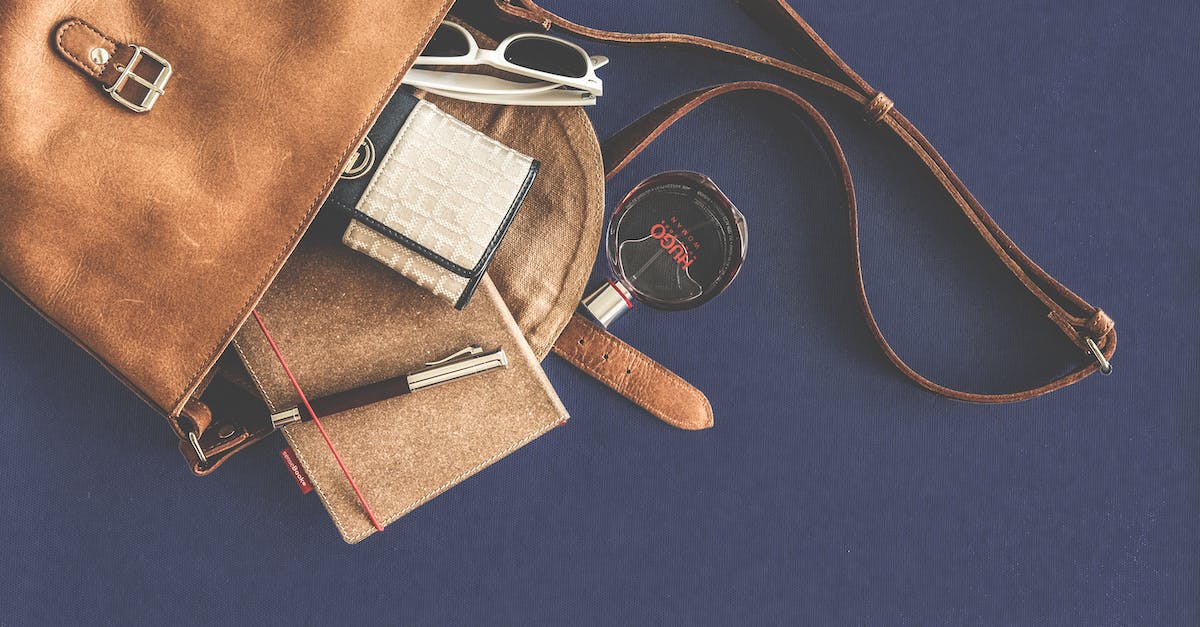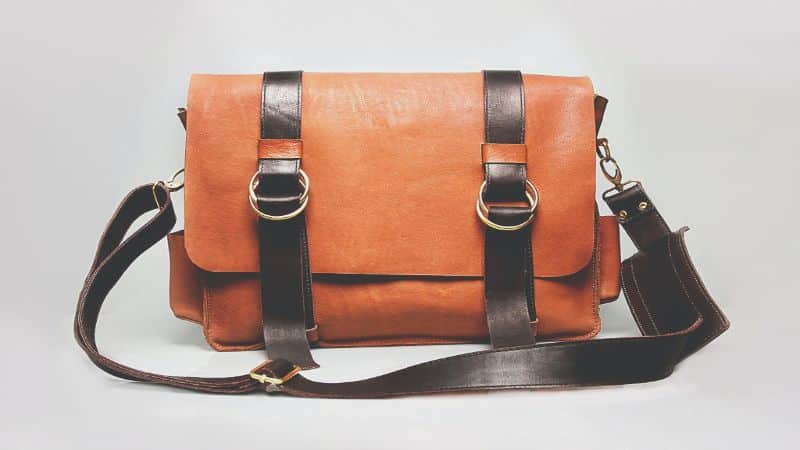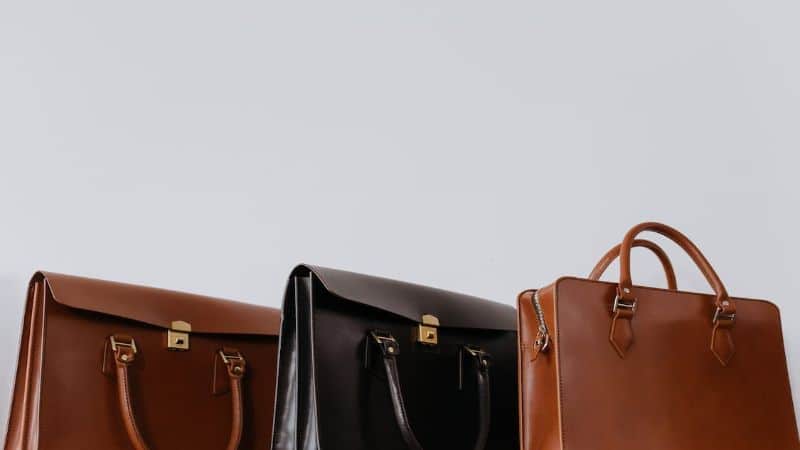Ever found yourself wondering whether you’ve just bought a handbag or a purse? You’re not alone! These terms are often used interchangeably, but there’s a subtle difference that’s worth noting. It’s all about function and fashion, and knowing the distinction can up your style game.

Think of the last time you complimented someone on their “purse” and they corrected you with a smile, “Oh, this is actually a handbag.” There’s a reason for that, and it’s not just about semantics. Let’s dive into the world of accessories and clear up the confusion once and for all.
Handbag vs Purse: What’s the Difference?
When you’re exploring the world of accessories, knowing the nuances can make a real impact on your fashion choices. A handbag and a purse may appear similar but they cater to different needs and occasions.
Handbags are typically larger, designed for you to carry your essentials and more. They often come with various compartments to keep your items organized and are seen as a practical choice for day-to-day use. Whether you’re heading to work or going out for a casual lunch, a handbag is your go-to accessory for its functionality and style.
On the flip side, purses are typically smaller and more compact. They’re meant to hold only your absolute necessities like cash, cards, and maybe a lipstick or two. If you’re heading out for a night or attending a formal event, a purse is what you’ll likely reach for—it’s the perfect accessory for times when you need less on your person.
Here’s a quick rundown:
- Handbags:
- Purses:
Materials also play a part in distinguishing the two. Handbags can be found in a variety of materials from leather to canvas, suited for longevity and frequent use. Purses, however, often come in delicate fabrics or fine leather to complement an evening gown or a chic outfit.
Your choice between a handbag or a purse will also signal your style to the world. A luxurious leather handbag exudes professionalism and readiness for business, while a glittering clutch purse screams sophistication and party-readiness.
Understanding this difference isn’t just about terminology—it’s about making the right choice for your occasion. So next time you’re planning your outfit, remember the role your accessory will play and pick accordingly.
Functionality: What Sets Handbags and Purses Apart?
When you’re deciding between a handbag and a purse, think about what you’ll need to carry. Handbags are designed with functionality in mind. They’re workhorses, equipped to handle the hustle of daily life. You’re not just carrying your wallet and phone; you need space for a water bottle, makeup kit, sometimes even a laptop or a pair of flats.
Purses, on the other hand, prioritize form over function. They’re small, often just roomy enough for your essentials—ID, credit cards, and lipstick. Purses aren’t built for the bulk; they complement your outfit without overshadowing it.
Here’s a breakdown of the two:
- Handbags:
- Purses:
Materials play a big role too. Handbags often come in leather, canvas, or nylon; these can stand up to wear and tear. But for purses, it’s about the luxe look—think satin or patent leather.
So when you’re planning your day, match your choice to your tasks. Running errands? Grab a handbag. Heading to a dinner or a wedding? A purse is your go-to. Remember, the right selection can make your life easier and your style sharper. With both handbags and purses, it’s about picking the perfect tool to complement both your needs and your look.
Fashion Statement: How Handbags and Purses Differ in Style
When you’re navigating the world of fashion, a handbag is often seen as a workhorse with a stylish twist. It’s the carryall that doesn’t just hold your essentials; it elevates your outfit. Handbags come in varied designs, from sleek totes to casual hobos. They can be adorned with details like buckles, studs, and patterns that set a fashion trend or compliment classic looks.
Purses, in contrast, play a different role. Think of a purse as jewelry for your outfit—a final touch that signifies elegance. They’re often smaller, making them less about utility and more about complementing an ensemble. A clutch or a minaudiere is a go-to for gala events where the size of the bag is second to its aesthetic appeal.
Consider the materials. Handbags favor durability—think full-grain leather or high-quality vegan alternatives. These materials not only last but also develop character over time. Whereas purses are about the here and now, dazzling with satin, beads or sequins to make a bold statement during a night out.
A quick glance at fashion shows and you’ll notice:
- Handbags are often showcased for their versatility and functionality, matching a range of outfits from corporate to casual chic.
- Purses are presented as complimentary pieces, with designs that might mirror the patterns and motifs of a dress or suit.
Let’s break it down in styling terms:
- A structured leather satchel works wonders with a power suit.
- A bejeweled purse is the perfect accompaniment for that little black dress.
« How to Keep White Handbag Clean: Luxe Look, Spotless Style
Purse vs Wallet: Unveiling the Surprising Differences »
In the end, whether you’re aiming for efficiency or that chic factor determines your pick. Remember, handbags and purses are not just accessories, they’re expressions of your personality and style. Choose wisely, but more importantly, choose what feels right for you.
Handbag vs Purse: A Historical Perspective
Delving into history, it’s clear that handbags and purses have evolved significantly over time. Initially, both items were born out of necessity. In the 14th century, both men and women wore pouches tied around their waist, called ‘girdle pouches’. These pouches are the precursors to the modern purse.
As you move into the Renaissance era, things start to change. Women’s dresses became more elaborate, with voluminous skirts and tight bodices leaving no room for pockets. Thus, the reticule, a small purse-like bag, emerged. Crafted from silk and velvet, these bags were designed to hang from the wrist and carry small items like smelling salts or a handkerchief.
The Industrial Revolution brought another twist. Travel became more widespread, and luggage was needed. Handbags were invented to meet this demand, with stronger, more durable materials being used. Leather and metal frames saw handbags become a staple for travel and daily activities.
In the 20th century, handbags became a status symbol. Designers like Hermes and Chanel began creating luxury handbags, contributing to the high fashion allure they hold today. These bags were not just for storage; they were a statement of wealth and fashion consciousness.
Purses, however, shifted direction. They leaned towards being an accessory for special occasions, akin to jewelry. Made from precious materials such as satin and adorned with jewels and embroidery, purses were more about style than substance.
Notice how social changes often influenced the trajectory of handbags and purses:
- Post-War Fashion: A rise in practicality led to larger handbags that could carry more items.
- 1960s and 1970s: Youth culture spurred the popularity of cross-body bags and smaller purses.
- Modern Day: The lines blur with clutches acting as purses but built with the practicality of handbags.
The ongoing evolution of handbags and purses reflects the changing social norms, lifestyles, and technological advancements. From their humble beginnings to high fashion runways, these accessories carry much more than just personal items; they carry history and a legacy of transformation.
Conclusion
You’ve journeyed through the fascinating evolution of handbags and purses discovering how they’ve adapted to fit the needs and styles of their times. From a simple necessity to a fashion statement, these accessories have truly come a long way. Remember, whether you’re opting for practicality or elegance, there’s a perfect match for every occasion in the diverse world of handbags and purses. Now that you’re aware of their distinct histories and characteristics, you’ll not only choose with confidence but also appreciate the story behind each piece you carry.
Frequently Asked Questions
What is the main difference between handbags and purses?
Handbags are typically larger and designed for carrying several items during travel or daily activities, while purses are smaller, intended for style and holding only essentials.
How have handbags and purses evolved over time?
Initially created for necessity, handbags and purses have evolved into fashion statements with diverse characteristics, influenced by social changes, lifestyles, and technological advancements.
Why were handbags invented?
Handbags were invented to cater to the needs of people for a practical way to carry multiple items while traveling or going about their daily activities.
How did social changes influence the design of handbags and purses?
Social changes like post-war practicality demands and the popularity of cross-body bags in the ’60s and ’70s influenced handbags to be more functional and purses to become trendier and more elegant.
Do handbags and purses serve different purposes?
Yes, handbags are designed to be more functional for carrying various items, while purses are typically used for their style and the ability to carry a few essential items.










